Sarah L. Johnson's Blog, page 125
November 10, 2012
A visual preview of the winter season: Downton Abbey readalike edition
In updating the Historical Novel Society's forthcoming books list, I read through a lot of publishers' catalogs. Certain themes quickly became apparent therein: A number of historical novels for late 2012 through early 2013 are being promoted as good choices for Downton Abbey fans. (And I'm one of them. No spoilers on Season Three, please!) These dozen titles are the focus of this latest visual preview.
With Downton being so enormously popular, publishers are pouncing on literary comparisons. This doesn't mean these books are carbon copies of one another, though, or that authors are rushing to imitate the show... but if there are any similarities in topic, theme, or setting, you can bet they'll be noted. Some titles recommended as readalikes, like Jacqueline Winspear's Maisie Dobbs mysteries, have been around considerably longer than Downton. (There'll be a new Winspear next March, Leaving Everything Most Loved, but the cover isn't available yet.)
That said, if you're an author working on an Edwardian- or WWI-set novel, this may be the year to make that sale!
Most of all, this varied list demonstrates the many different tie-ins that can be made to Downton Abbey, something that interests me as a readers' advisor. Some of the historical novels below are set in the same pre-WWI-through-1920s timeframe; other are sagas that dramatize the interaction between aristocrats and servants on a grand English estate. Some emphasize the changing social fabric during wartime in the early 20th century, and for one or two, the main link between them and Downton is their joint focus on strong, capable (British) women.
All of the titles below are US editions. Also interestingly: I've been through some UK catalogs as well, and don't see nearly as many Downton mentions!
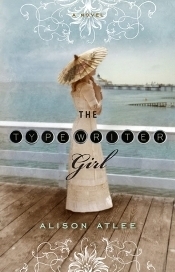 In Victorian England, a poverty-stricken young woman seeking personal independence and a way to overcome troublesome incidents from her past takes a job at an exclusive seaside resort. Check out the gorgeous period artwork at the author's Pinterest page. Gallery, January.
In Victorian England, a poverty-stricken young woman seeking personal independence and a way to overcome troublesome incidents from her past takes a job at an exclusive seaside resort. Check out the gorgeous period artwork at the author's Pinterest page. Gallery, January. 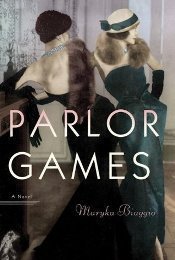 Fast-moving biographical fiction about adventuress May Dugas, a notorious con artist and social climber in Gilded Age and 20th century America, London, and Shanghai. Doubleday, January.
Fast-moving biographical fiction about adventuress May Dugas, a notorious con artist and social climber in Gilded Age and 20th century America, London, and Shanghai. Doubleday, January. 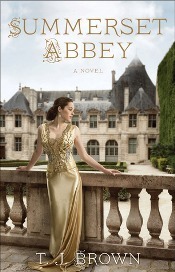
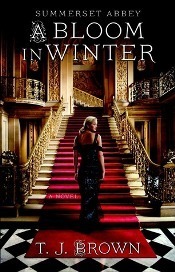 The first two books in a trilogy about three women, two aristocratic sisters and the governess's daughter they grew up with, adjusting to society's changing rules in pre-WWI England. Gallery, January and March.
The first two books in a trilogy about three women, two aristocratic sisters and the governess's daughter they grew up with, adjusting to society's changing rules in pre-WWI England. Gallery, January and March. 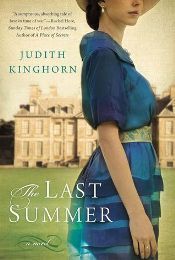 An upstairs-downstairs friendship turns to romance at a great English country house in 1914, as political winds are shifting towards war and a glorious era comes to an end. Isn't this a gorgeous cover? NAL, January.
An upstairs-downstairs friendship turns to romance at a great English country house in 1914, as political winds are shifting towards war and a glorious era comes to an end. Isn't this a gorgeous cover? NAL, January. 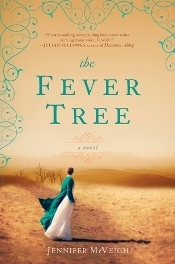 Julian Fellowes wrote a blurb for this literary romance set amid the beautiful, unforgiving landscape and cruel diamond mining operations of 1880s South Africa. A young Englishwoman travels there to establish a new life and finds herself confronting social injustice. Amy Einhorn, April.
Julian Fellowes wrote a blurb for this literary romance set amid the beautiful, unforgiving landscape and cruel diamond mining operations of 1880s South Africa. A young Englishwoman travels there to establish a new life and finds herself confronting social injustice. Amy Einhorn, April. 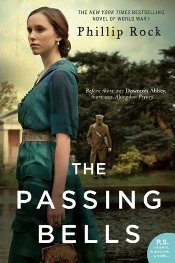 A backlist title from 1979 gets reissued with a fresh new look to attract Downton fans; the next two volumes in the series will follow. The Passing Bells centers on the aristocratic Greville family of Abingdon Pryory as their world of elegant garden parties and debutante balls comes crashing to a halt as war breaks out in 1914. Rock died in 2004. December, Morrow.
A backlist title from 1979 gets reissued with a fresh new look to attract Downton fans; the next two volumes in the series will follow. The Passing Bells centers on the aristocratic Greville family of Abingdon Pryory as their world of elegant garden parties and debutante balls comes crashing to a halt as war breaks out in 1914. Rock died in 2004. December, Morrow. 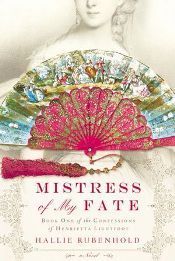 This debut novel by a well-known British historian is a romp through 18th-century London through the eyes of a young woman raised alongside her aristocratic cousins but who's forced to create a new life for herself on the streets. Grand Central, January.
This debut novel by a well-known British historian is a romp through 18th-century London through the eyes of a young woman raised alongside her aristocratic cousins but who's forced to create a new life for herself on the streets. Grand Central, January. 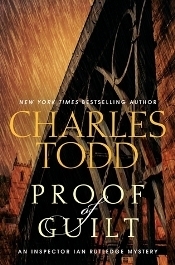 The grimly evoked post-WWI period in Charles Todd's long-running Ian Rutledge mystery series has obvious links for Downton viewers (who should also check out his standalone novel The Walnut Tree, which is out now). In Proof of Guilt, a seeming hit-and-run accident turns into a murder investigation, but the victim's identity and place of death remain unknown. Morrow, January.
The grimly evoked post-WWI period in Charles Todd's long-running Ian Rutledge mystery series has obvious links for Downton viewers (who should also check out his standalone novel The Walnut Tree, which is out now). In Proof of Guilt, a seeming hit-and-run accident turns into a murder investigation, but the victim's identity and place of death remain unknown. Morrow, January. 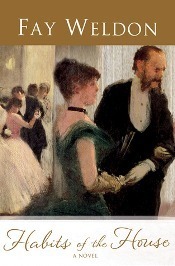 First in a new trilogy from the Upstairs, Downstairs writer, Habits of the House examines the day-to-day lives of an aristocratic English family and their servants as the financially strapped Earl of Dilberne seeks to recoup his fortunes by marrying his son off to a Chicago heiress. St. Martin's, January.
First in a new trilogy from the Upstairs, Downstairs writer, Habits of the House examines the day-to-day lives of an aristocratic English family and their servants as the financially strapped Earl of Dilberne seeks to recoup his fortunes by marrying his son off to a Chicago heiress. St. Martin's, January. 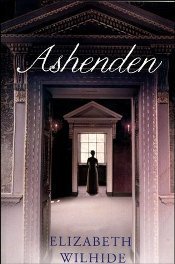 The lives of loves of the inhabitants of an English country mansion, from the original architect to its final owners in the present day, over the span of 240 years. Simon & Schuster, January.
The lives of loves of the inhabitants of an English country mansion, from the original architect to its final owners in the present day, over the span of 240 years. Simon & Schuster, January. 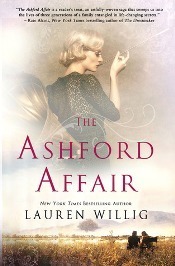 Willig takes an excursion away from her Pink Carnation series with this standalone novel that promises to "bring an Out of Africa feel to a Downton Abbey cast." A modern-day lawyer learns a century's worth of family secrets in a tale that moves from 21st-century Manhattan to WWI England to 1920s Kenya. St. Martin's, April.
Willig takes an excursion away from her Pink Carnation series with this standalone novel that promises to "bring an Out of Africa feel to a Downton Abbey cast." A modern-day lawyer learns a century's worth of family secrets in a tale that moves from 21st-century Manhattan to WWI England to 1920s Kenya. St. Martin's, April.
With Downton being so enormously popular, publishers are pouncing on literary comparisons. This doesn't mean these books are carbon copies of one another, though, or that authors are rushing to imitate the show... but if there are any similarities in topic, theme, or setting, you can bet they'll be noted. Some titles recommended as readalikes, like Jacqueline Winspear's Maisie Dobbs mysteries, have been around considerably longer than Downton. (There'll be a new Winspear next March, Leaving Everything Most Loved, but the cover isn't available yet.)
That said, if you're an author working on an Edwardian- or WWI-set novel, this may be the year to make that sale!
Most of all, this varied list demonstrates the many different tie-ins that can be made to Downton Abbey, something that interests me as a readers' advisor. Some of the historical novels below are set in the same pre-WWI-through-1920s timeframe; other are sagas that dramatize the interaction between aristocrats and servants on a grand English estate. Some emphasize the changing social fabric during wartime in the early 20th century, and for one or two, the main link between them and Downton is their joint focus on strong, capable (British) women.
All of the titles below are US editions. Also interestingly: I've been through some UK catalogs as well, and don't see nearly as many Downton mentions!
 In Victorian England, a poverty-stricken young woman seeking personal independence and a way to overcome troublesome incidents from her past takes a job at an exclusive seaside resort. Check out the gorgeous period artwork at the author's Pinterest page. Gallery, January.
In Victorian England, a poverty-stricken young woman seeking personal independence and a way to overcome troublesome incidents from her past takes a job at an exclusive seaside resort. Check out the gorgeous period artwork at the author's Pinterest page. Gallery, January.  Fast-moving biographical fiction about adventuress May Dugas, a notorious con artist and social climber in Gilded Age and 20th century America, London, and Shanghai. Doubleday, January.
Fast-moving biographical fiction about adventuress May Dugas, a notorious con artist and social climber in Gilded Age and 20th century America, London, and Shanghai. Doubleday, January. 
 The first two books in a trilogy about three women, two aristocratic sisters and the governess's daughter they grew up with, adjusting to society's changing rules in pre-WWI England. Gallery, January and March.
The first two books in a trilogy about three women, two aristocratic sisters and the governess's daughter they grew up with, adjusting to society's changing rules in pre-WWI England. Gallery, January and March.  An upstairs-downstairs friendship turns to romance at a great English country house in 1914, as political winds are shifting towards war and a glorious era comes to an end. Isn't this a gorgeous cover? NAL, January.
An upstairs-downstairs friendship turns to romance at a great English country house in 1914, as political winds are shifting towards war and a glorious era comes to an end. Isn't this a gorgeous cover? NAL, January.  Julian Fellowes wrote a blurb for this literary romance set amid the beautiful, unforgiving landscape and cruel diamond mining operations of 1880s South Africa. A young Englishwoman travels there to establish a new life and finds herself confronting social injustice. Amy Einhorn, April.
Julian Fellowes wrote a blurb for this literary romance set amid the beautiful, unforgiving landscape and cruel diamond mining operations of 1880s South Africa. A young Englishwoman travels there to establish a new life and finds herself confronting social injustice. Amy Einhorn, April.  A backlist title from 1979 gets reissued with a fresh new look to attract Downton fans; the next two volumes in the series will follow. The Passing Bells centers on the aristocratic Greville family of Abingdon Pryory as their world of elegant garden parties and debutante balls comes crashing to a halt as war breaks out in 1914. Rock died in 2004. December, Morrow.
A backlist title from 1979 gets reissued with a fresh new look to attract Downton fans; the next two volumes in the series will follow. The Passing Bells centers on the aristocratic Greville family of Abingdon Pryory as their world of elegant garden parties and debutante balls comes crashing to a halt as war breaks out in 1914. Rock died in 2004. December, Morrow.  This debut novel by a well-known British historian is a romp through 18th-century London through the eyes of a young woman raised alongside her aristocratic cousins but who's forced to create a new life for herself on the streets. Grand Central, January.
This debut novel by a well-known British historian is a romp through 18th-century London through the eyes of a young woman raised alongside her aristocratic cousins but who's forced to create a new life for herself on the streets. Grand Central, January.  The grimly evoked post-WWI period in Charles Todd's long-running Ian Rutledge mystery series has obvious links for Downton viewers (who should also check out his standalone novel The Walnut Tree, which is out now). In Proof of Guilt, a seeming hit-and-run accident turns into a murder investigation, but the victim's identity and place of death remain unknown. Morrow, January.
The grimly evoked post-WWI period in Charles Todd's long-running Ian Rutledge mystery series has obvious links for Downton viewers (who should also check out his standalone novel The Walnut Tree, which is out now). In Proof of Guilt, a seeming hit-and-run accident turns into a murder investigation, but the victim's identity and place of death remain unknown. Morrow, January.  First in a new trilogy from the Upstairs, Downstairs writer, Habits of the House examines the day-to-day lives of an aristocratic English family and their servants as the financially strapped Earl of Dilberne seeks to recoup his fortunes by marrying his son off to a Chicago heiress. St. Martin's, January.
First in a new trilogy from the Upstairs, Downstairs writer, Habits of the House examines the day-to-day lives of an aristocratic English family and their servants as the financially strapped Earl of Dilberne seeks to recoup his fortunes by marrying his son off to a Chicago heiress. St. Martin's, January.  The lives of loves of the inhabitants of an English country mansion, from the original architect to its final owners in the present day, over the span of 240 years. Simon & Schuster, January.
The lives of loves of the inhabitants of an English country mansion, from the original architect to its final owners in the present day, over the span of 240 years. Simon & Schuster, January.  Willig takes an excursion away from her Pink Carnation series with this standalone novel that promises to "bring an Out of Africa feel to a Downton Abbey cast." A modern-day lawyer learns a century's worth of family secrets in a tale that moves from 21st-century Manhattan to WWI England to 1920s Kenya. St. Martin's, April.
Willig takes an excursion away from her Pink Carnation series with this standalone novel that promises to "bring an Out of Africa feel to a Downton Abbey cast." A modern-day lawyer learns a century's worth of family secrets in a tale that moves from 21st-century Manhattan to WWI England to 1920s Kenya. St. Martin's, April.
Published on November 10, 2012 10:00
November 5, 2012
In which I read Jenny Barden's Mistress of the Sea
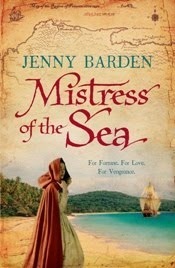 With a blurb describing it as an “epic, romantic swash-buckling adventure,” Jenny Barden’s debut Mistress of the Sea is a novel I’ve been eager to read. Back in August, as you may recall, Jenny had contributed an informative guest post about Francis Drake's expedition to Panama in 1570-73, in which he took revenge against the Spanish for their treacherous rout of the English fleet two years prior.
With a blurb describing it as an “epic, romantic swash-buckling adventure,” Jenny Barden’s debut Mistress of the Sea is a novel I’ve been eager to read. Back in August, as you may recall, Jenny had contributed an informative guest post about Francis Drake's expedition to Panama in 1570-73, in which he took revenge against the Spanish for their treacherous rout of the English fleet two years prior. The exploration of New World lands – and the profits gained thereby, especially at the expense of the Spanish – contributed to the glory of the Elizabethan Golden Age. Despite this, the novel’s subject isn’t one that most aficionados of Tudor fiction will be familiar with, and its originality is all to the good. If you’re a reader who thirsts for adventure, wouldn’t you prefer to travel somewhere you’ve never been?
While the backdrop is historically based, the main characters of Mistress of the Sea are fictional. Their story pivots upon a “what if” premise: Suppose a young woman took part in Drake’s voyage to Panama. What would her motives have been, and what would her experience have been like? What price would she pay for her impulsive act?
Ellyn Cooksley, daughter of a wealthy Plymouth merchant in 1570, loves her irascible father but can’t see marrying either of the boorish suitors he tries to pair her with. Master Cooksley agrees to finance Drake and his privateers, but when he insists on joining them, Ellyn worries about his poor health. To help care for him, she stows away aboard Drake's ship, the Swan, in the garb of a cabin boy.
If you anticipated a feminist scenario in which Ellyn successfully maintains her disguise and becomes an accepted member of their daring crew, you’d be much mistaken. While the men admire her beauty and respect her as their backer’s daughter, Ellyn is clearly a liability. In particular, Will Doonan, a master caulker and her family’s handsome lodger, feels let down by her presence. Will had dreamed of making his fortune and possibly winning Ellyn when he returned from sea, but now he starts questioning her judgment.
Although he has sworn to support Drake, who is depicted as merciless in seeing their mission fulfilled, Will also has a more private reason for signing on. His brother Kit was captured by Spaniards on a previous Caribbean voyage, and Will means to avenge his loss. He has tough calls to make, since protecting Ellyn will pull him away from their plan.
The prose has a calm confidence, balancing scenes of perilous escapades with others of thoughtful reflection while propelling readers smoothly through the exotic West Indies. The viewpoint switches from brave Ellyn, who is left behind with her ill father on a Caribbean island, to Will and Kit and then back again; this ensures a varied perspective while driving the story forward.
Will and Ellyn’s tender love story is no less passionate for its being chaste. They also endure long periods of separation, but their growing bond is anchored in the spirit of the age. One gets a sense of the vastness of the world, as the Elizabethans would have perceived it, and the mysterious forces that nonetheless tie these lovers to one another. Their dialogue has a gentle Shakespearean lilt, and given the novel’s strong historical sense, exclamations like “What ho!” and “Go to!” and “Fie!” come out sounding natural.
With its feminine spin, Mistress of the Sea invigorates a genre too often focused solely on brawny male exploits, but there’s plenty to satisfy fans of seafaring action, too. (And if you can’t distinguish a pinnace from a shallop, carrack, or caravel by the time you’re done, even with all the context provided, get thee to the glossary at the end of the book.) Whether you sign up for this journey in search of romance, high-stakes adventure, or just engaging entertainment, there’s something for most everyone here.
Mistress of the Sea was published by Ebury/Random House UK in August at £14.99 (hardcover, 408pp). The author is a fellow member of the Historical Novel Society, whose recent London conference she coordinated (and ran flawlessly) – and where she gave a great presentation on how her book found a mainstream publisher. Her website is www.jennybarden.com.
Published on November 05, 2012 17:00
November 3, 2012
Bits and pieces
Happy weekend!
The winner of the giveaway for Mary Sharratt's Illuminations is Shelly W. Thanks to everyone who entered! I've notified Shelly, and her copy of the book is en route.
Sarah Nagle, Collections Librarian at Carver County Library in Chaska, MN, has put together a great "World War II in Fact and Fiction" handout with two of her Minnesota library colleagues; it accompanied their program at the MN Library Association conference on October 5th. If you haven't been able to find enough wartime fiction for yourself or your library's patrons, check out their thematically-arranged list... I'm sure there will be some that are new to you.
Reviews from the Historical Novels Review's November issue are up - all 305 of them. Over 30 reviews of indie titles are online as well. The Historical Novel Society was founded in 1997, and for the cover story, a small number of longtime members shared their perspectives on the HNS on the occasion of its 15th birthday. It was fun compiling that piece and hearing everyone's thoughts.
The next big thing in the book blogosphere is a meme called... The Next Big Thing. Actually, it's been spreading for the last two months or so. Authors, including many historical novelists, have been tagging one another to describe what their work-in-progress is about. Here's a short collection of these posts. Check them out to see what's in the works.
M.M. Bennetts
Nancy Bilyeau
Debra Brown
Sandra Byrd
Michelle Cameron
Stephanie Cowell
Heather Domin
Christy English
Elizabeth Caulfield Felt
Sandra Gulland
Liz Harris
Tinney Heath
Susan Keogh
Victoria Lamb
Lilian Nattel
Sophie Perinot
Teralyn Pilgrim
Kim Rendfeld
Julie K. Rose
Susan Spann
Kris Waldherr
The winner of the giveaway for Mary Sharratt's Illuminations is Shelly W. Thanks to everyone who entered! I've notified Shelly, and her copy of the book is en route.
Sarah Nagle, Collections Librarian at Carver County Library in Chaska, MN, has put together a great "World War II in Fact and Fiction" handout with two of her Minnesota library colleagues; it accompanied their program at the MN Library Association conference on October 5th. If you haven't been able to find enough wartime fiction for yourself or your library's patrons, check out their thematically-arranged list... I'm sure there will be some that are new to you.
Reviews from the Historical Novels Review's November issue are up - all 305 of them. Over 30 reviews of indie titles are online as well. The Historical Novel Society was founded in 1997, and for the cover story, a small number of longtime members shared their perspectives on the HNS on the occasion of its 15th birthday. It was fun compiling that piece and hearing everyone's thoughts.
The next big thing in the book blogosphere is a meme called... The Next Big Thing. Actually, it's been spreading for the last two months or so. Authors, including many historical novelists, have been tagging one another to describe what their work-in-progress is about. Here's a short collection of these posts. Check them out to see what's in the works.
M.M. Bennetts
Nancy Bilyeau
Debra Brown
Sandra Byrd
Michelle Cameron
Stephanie Cowell
Heather Domin
Christy English
Elizabeth Caulfield Felt
Sandra Gulland
Liz Harris
Tinney Heath
Susan Keogh
Victoria Lamb
Lilian Nattel
Sophie Perinot
Teralyn Pilgrim
Kim Rendfeld
Julie K. Rose
Susan Spann
Kris Waldherr
If I'm missing any posts (of the historical fiction persuasion, that is), let me know in the comments!
Published on November 03, 2012 07:00
October 30, 2012
Book review: The Strange Death of Mistress Coffin, by Robert J. Begiebing
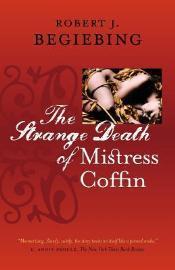 An unsettling literary mystery spun around the first murder in Exeter, New Hampshire, a true-life unsolved crime, The Strange Death of Mistress Coffin wastes no time settling into its historical milieu. The language is formal yet accessible, while the tale is darkly compelling.
An unsettling literary mystery spun around the first murder in Exeter, New Hampshire, a true-life unsolved crime, The Strange Death of Mistress Coffin wastes no time settling into its historical milieu. The language is formal yet accessible, while the tale is darkly compelling.In 1648, a magistrate of the Pascataqua plantation writes to Englishman Richard Browne with an invitation and request. Browne seeks entry into the forest trade to recoup his family's financial losses; his would-be benefactor, Jonathan Cole, has been unable to resolve a months-old case and asks for his help.
That past spring, a young woman’s nude, strangled, “much abused” body was found in the bay. Her husband has withdrawn charges against the principal suspect, who has since disappeared – whether out of guilt or for his own reasons, nobody can guess.
Begiebing introduces the late Mistress Coffin in slow, deliberate fashion: we learn others’ reports of her, then her first name, and only later, perhaps, her own thoughts. “She left herself too undone,” testified the suspect, Jared Higgins, a man hired to row her to market on the day she died. “There was some enchantment over her ripe and plucky beauty... something in her ways to disturb Christian men and women.”
Such un-Puritan-like behavior is just one way this novel diverges from the expected norm. Godly devotion and superstitious beliefs exist alongside worldly acquisitiveness of a sort that today’s business moguls would recognize. Hallmarks of refined civilization can be found even in the pristine wilderness: wealthy men keep large libraries, quality board-cloths are laid upon tables, and pewter servingware is used at meals. The people maintain strong ties with England and closely follow its troubled politics. Finally, as Browne learns firsthand, sometimes earthly desires trump any outside rules.
The mysteries twist and deepen the longer Browne searches for answers, and with his unspoken attraction toward Higgins’ abandoned wife, he develops his own reasons for directing the investigation as he does. Times and customs may change, but human nature remains constant. As much a revelatory character study as an absorbing crime novel, The Strange Death of Mistress Coffin offers sharp depictions of colonial life and a startling bridge between that long-ago world and now.
This classic backlist title was recently reprinted by Hardscrabble Books/Univ. Press of New England (Aug. 2012, $16.95, trade pb, 236pp), with a striking new cover, in honor of the 20th anniversary of its initial release. It forms a loose trilogy with Begiebing's two other novels of historic New England, The Adventures of Allegra Fullerton and Rebecca Wentworth's Distraction.
Published on October 30, 2012 11:00
October 27, 2012
On Alan Titchmarsh's The Haunting, a saga of early 19th-century and modern Hampshire
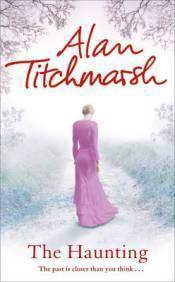 I first spotted Alan Titchmarsh's The Haunting on a display table at the Waterstone's in central Wells, England. It was a miserable rainy day in late September, and I didn't want to be loaded down with packages, so I made a note to order it when I got home.
I first spotted Alan Titchmarsh's The Haunting on a display table at the Waterstone's in central Wells, England. It was a miserable rainy day in late September, and I didn't want to be loaded down with packages, so I made a note to order it when I got home.Dual-period novels in which the past haunts the present always pique my interest, and it also intrigues me to see the many variations on this theme. I love Kate Morton's novels, and from the back cover blurb I would have predicted a similar type of read:
How can the mysterious disappearance of Anne Flint and the drowning of a young girl in a chalk stream in 1816 possibly affect the life of schoolteacher Harry Flint some two centuries later? ... A story of love and betrayal, intrigue, and murder, where people are not what they seem, and the past is no more predictable than the future...
However, The Haunting has a very different feel to anything Morton writes; its gentle, flowing style reflects the rhythms of life in rural Hampshire, and while chapters alternate between spring 1816 and spring 2010, the two eras are only loosely interwoven. The literal "haunting" mentioned in the title is almost incidental to the plot. This is deliberate on the author's part, and the opening quotation (see beginning of 2nd paragraph on this page) explains why.
Anne Flint is an attractive 15-year-old housemaid at a country manor. She is ambitious and literate (she loves reading romantic adventures about highwaymen) and dreams of becoming a lady's maid at a grand estate. One bright spring day in April 1816, she grabs her opportunity and sneaks out the wrought-iron gate for a scheduled meeting. Before day's end, another young woman will be found dead in the mill stream, wearing Anne's clothing. Anne is nowhere to be seen. Her journey from that point on is sometimes predictable, sometimes not.
In 2010, at St. Jude's School in Winchester, teacher Harry Flint does his best to interest his students in history, but they're having none of it. Still recovering from a recent divorce, he decides to make a fresh start by quitting his job and buying a small thatched cottage along the River Itchen. His work colleague thinks he's crazy because the house is in such poor shape, but Harry thinks it's the perfect place for him to research his ancestry. He doesn't get far. His friendship with the young widow next door quickly turns romantic (and helps him get over his lack of confidence and innate stuffiness), but there are issues both must address before they can move forward.
Parallels between the late Georgian scenes and the modern ones are blatantly drawn at first (we really don't need the same phrases repeated in both sections). Because of this, I expected more emphasis throughout on Harry's genealogical research and the specifics on how he and Anne were linked. They have the same last name, after all. Fortunately each story stands very well on its own—and that's all I'll say about what happens. Being American, I hadn't known that Alan Titchmarsh was the well-known host of gardening programs on the BBC, but his talent for describing country landscapes is a pleasurable highlight.
The novel takes on a melancholy air as it poses thoughtful questions on the impossibility of recapturing the past and how impulse decisions and random chance can both have long-term effects... ones which extend over centuries. Overall, though, it's not a depressing read. It wraps up on a very satisfying note.
The Haunting was published by Hodder & Stoughton in paperback at £7.99 in August. My copy is the large format paperback (the export edition) priced at £13.99, which has the cover art above. Find it on Goodreads here.
Published on October 27, 2012 09:00
October 25, 2012
A look at Michael Ennis's The Malice of Fortune
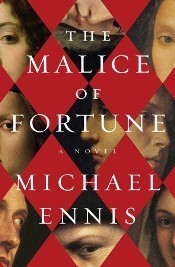 Twenty years have passed since publication of Duchess of Milan, Michael Ennis’s spectacular Renaissance epic, so the appearance of his new novel is good cause to celebrate. The Malice of Fortune takes place in Italy in 1502, a few years after most events from the earlier book, and exhibits the same glorious ambience, deadly power politics, sharply rendered historical characters, and dark sensuality.
Twenty years have passed since publication of Duchess of Milan, Michael Ennis’s spectacular Renaissance epic, so the appearance of his new novel is good cause to celebrate. The Malice of Fortune takes place in Italy in 1502, a few years after most events from the earlier book, and exhibits the same glorious ambience, deadly power politics, sharply rendered historical characters, and dark sensuality. However, this novel is a different type of creature: a complex intellectual thriller with an even more sinister backdrop.
Damiata, a courtesan of Rome, is a heroine worth rooting for. Although she is as fierce as Isabella of Aragon and Beatrice d'Este from Duchess, she lacks their sphere of influence, status, and (yes) selfishness. Her efforts are focused wholly on her young son.
Five-year-old Giovanni is taken hostage by Pope Alexander VI, aka Rodrigo Borgia, to assure Damiata’s compliance. Borgia suspects her of inciting the murder of her former lover, the pope's son Juan – Giovanni's father – and sends her north to Imola to exonerate herself, if she can. The amulet Juan was wearing when he was killed was found in the possession of a dead woman there.
Imola is controlled by Cesare Borgia, Duke of Valentinois, Juan’s enigmatic brother, who is best known by the cool nickname "Valentino." Upon her arrival, Damiata finds a land in turmoil as Valentino and the treacherous mercenaries known as condottieri jockey for power. Even more dangerously for Damiata, a serial killer is depositing the results of his crimes in various locales around the city.
Damiata finds help from Niccolò Machiavelli, a minor Florentine diplomat and secretary to the Ten of War, and the great Leonardo da Vinci, Valentino’s chief military engineer. In this revitalized Italy struggling to break free from long-held superstitions, there are two ways by which to recognize a murderer: by his corrupt nature and by the evidence he leaves behind. “If we are to defeat Fortune, Secretary,” Valentino advises Niccolò, “we must anticipate events.” Between Niccolò’s forensic profiling (he studies ancient despots and psychopaths for clues to their character) and Leonardo’s brilliant scientific acumen and dissection experiments, they have both methods covered.
The Malice of Fortune doesn’t unfold like a typical murder mystery, with these two famous Renaissance men nosing into horrific happenings like traditional amateur detectives might. Ennis plays too close to real-life history for that. His crafty puzzle respects his characters' personalities and is carefully slotted within actual recorded events. The body parts recovered in and around Imola appear in a pattern perfect for a mind like Leonardo’s to decipher, and which, combined with the crime’s grisliness, indicates that a truly cunning form of evil is at work. The killer not only incorporates Leonardo’s methodology but taunts them with it.
In 1502, Machiavelli’s writing of The Prince was still 11 years in his future; he appears here not as a seasoned political theorist but as a younger man still earning his clout. Niccolò picks up the narrative when Damiata’s account wraps up, giving readers an inside glimpse of his reasoning as well as events that, in this fictional version, led to the observations in his masterwork.
In the beginning, the plot feels somewhat imbalanced – gorgeous descriptions, but too little action – but over time, as the solution falls into place, the suspense grows and the pages turn more swiftly. It also has a fine sense of the dramatic that feels right for the era. Dense, erudite, and steeped in the fraught power struggles and brainy pursuits of the Italian Renaissance, Malice doesn't respond well to a tentative approach. Fortune favors the bold, so grant it your complete attention and watch it repay you in full.
The Malice of Fortune was published by Doubleday in September at $26.95 (hb, 396pp, including a six-page author's note). The Canadian publisher is McClelland & Stewart (hb, $29.99). Read Ennis's fascinating article in the National Post about its road to success, and the role that a good editor can play in book publishing.
Published on October 25, 2012 16:00
October 19, 2012
Book review: Winter of the World, by Ken Follett
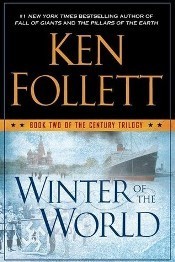 The second volume in Ken Follett’s Century Trilogy begins with a scene that aptly foreshadows its chilling title. The year is 1933. Hitler has just been made chancellor, and Germans are pondering how to react. Over breakfast with her family at their Berlin home, native Englishwoman Maud von Ulrich defends the outspoken stance she took in her last magazine column. "What would life be like for our children if Germany became a Fascist state?" she argues.
The second volume in Ken Follett’s Century Trilogy begins with a scene that aptly foreshadows its chilling title. The year is 1933. Hitler has just been made chancellor, and Germans are pondering how to react. Over breakfast with her family at their Berlin home, native Englishwoman Maud von Ulrich defends the outspoken stance she took in her last magazine column. "What would life be like for our children if Germany became a Fascist state?" she argues.Her husband, Walter, a member of the Reichstag, prefers a less risky approach to the Nazi threat, while son Erik disagrees: "But the Aryan race must be superior – we rule the world!"
It’s all rather ominous – and obvious. Follett’s no-nonsense style can lack subtlety at times, but he more than makes up for it with his firm grasp of history and ability to juggle multiple story strands, each as attention-grabbing as the last. In great part, he meets the high standard set by the mega-bestselling Fall of Giants. Although its outline never hides too deeply beneath the plot, Winter of the World is another accomplished and consistently entertaining feat.
In this panoramic epic spanning 16 years, from the Depression through the Cold War, diverse characters from around the globe are caught up in major (and some minor) historical dramas. From protests in German streets to the London Blitz to the Manhattan Project’s inner workings, the five families from the first book – Welsh, English, Russian, German, and American – get even further entangled. The focus has moved ahead to a new generation. Some children pursue the same paths as their parents, and new heroes and heroines emerge.
Each fights his or her own battle where it happens, be it in the boardrooms of Washington, D.C., in the air over Midway Island or much closer to home. In keeping with reality, one rarely gets to choose. As Carla von Ulrich, daughter of Maud and Walter, does her courageous utmost to halt Nazi atrocities, Lloyd Williams, the Cambridge-educated illegitimate son of a housemaid-turned-MP, heads to Spain during its civil war to combat fascism, not expecting to fight communists too.
This is an era when a factory worker from St. Petersburg, Russia, can become an American millionaire, and his gorgeous socialite daughter can marry almost anyone she wants. Follett gives them space to grow, and through their experiences creates some very gratifying moments. Following wartime turmoil, the former Daisy Peshkov awakens from her rich, empty existence to establish a meaningful life, and although her uncouth father, Lev, never achieves likeability, the best comeback lines belong to him.
"The world of international politics and diplomacy was quite small," Lloyd Williams thinks at one point. This happens to be true. As he and other ordinary citizens turn into movers and shakers, their many coincidental meetings begin to make more sense. This mammoth saga is all about connections, and Follett also explains with clarity the links among the political and social movements during this darkest
of times.
Winter of the World includes nearly every type of Second World War story, drawing together scenes of country house drama, suspenseful front-line action, Soviet espionage, daring resistance, generational conflict and even interracial romance. Most impressively, rather than a patchwork of disparate segments, Follett has produced another seamlessly woven and enjoyably readable work, one which honours the individual acts of bravery that shifted history’s course.
Ken Follett's Winter of the World was published by Dutton in September at $36, or $38 in Canada (hb, 940pp). In the UK, the publisher is Macmillan (£20, hb). This review originally appeared in Canada's Globe and Mail on Saturday, October 13th.
Published on October 19, 2012 17:49
October 15, 2012
Book review: The Secret Keeper, by Kate Morton
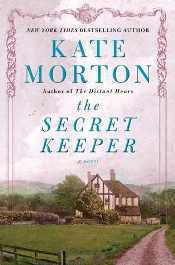 To my mind, Kate Morton remains unsurpassed at crafting multilayered generational mysteries. This is my favorite type of book, and when paired with her complex characters, sensitive use of language, and intricate plotting in which family secrets are tantalizingly revealed bit by bit, the result is literary magic.
To my mind, Kate Morton remains unsurpassed at crafting multilayered generational mysteries. This is my favorite type of book, and when paired with her complex characters, sensitive use of language, and intricate plotting in which family secrets are tantalizingly revealed bit by bit, the result is literary magic. Morton is not only a superb storyteller, but the concept of "story" itself threads throughout her work. In The Secret Keeper, the protagonists must come to terms with the stories they've heard and told themselves— ones which shaped their outlook on the world—and decide whether or not (or how much) to believe them.
And as the novel's cover and first chapter both indicate, every good story begins with a house.
Greenacres Farm, a rustic dwelling in rural Suffolk, is the longtime home of the Nicolsons. Laurel Nicolson, her three younger sisters, and their baby brother Gerry spent a contented childhood there, comforted by the knowledge that their parents adored them as well as each other. Only one oddball incident spoils Laurel's remembered idyll.
In 2011, Laurel, a famous actress in her sixties, returns to Greenacres for a celebration of her frail mother Dorothy's 90th birthday. While there, seeing decades-old mementos and faced with Dorothy's wandering memories, she finds herself drawn to revisit the summer of 1961. As a dreamy young woman of sixteen relishing a quiet moment in her tree house, Laurel had observed a crime as shocking as it was inexplicable. Although events were resolved to the police’s satisfaction, Laurel has trouble reconciling the violent scene with her image of her beautiful, loving, good-natured mother.
Seeking reassurance that their happy life wasn't based on a lie, she feels the clues to what happened must reside somewhere in her mother's past. Laurel has little to go on: a WWII-era photo of Dorothy and another woman, their arms linked and their hair swept into Victory rolls; an old book inscribed to Dorothy by a friend named Vivien; and the name of the stranger who was killed in her family’s meadow. "Who are you, Dorothy?" Laurel wonders. "Who were you, before you became Ma?"
This motif, the perceived rift between people of different generations, has echoes within several other situations in the book. “It was impossible to believe that the old woman upstairs had ever been that young or striking,” thinks the younger Dorothy—or Dolly, as she called herself then—about her employer, an embittered aristocrat who was hurt by love. If this point gets a little overfamiliar with each repeated instance, it’s still an important one to make.
Morton’s war-ravaged London, depicted with atmospheric flair, is a treacherous place swirling with heightened emotions, class-conscious socialites, bright spots of glamorous decadence, and the ever-present possibility of death or betrayal. As the plot switches among different periods, from Dolly's love life during the Blitz to Laurel’s research in 2011 and also to instances before and after the war, each strand builds upon another, and the mystery gathers momentum. Each discovery leads to yet more secrets. The final reveal, once it comes, is absolutely worth staying up late for. (Raising my hand here... I finished it at 1am last Sunday.)
Over the course of four hugely successful novels, which all have similar themes, Kate Morton has established herself as the preeminent author of contemporary Gothics. As with her previous books, though, the growing sense of dread within The Secret Keeper comes not from supernatural happenings but from the unearthing of long-ago tragedies and knowledge of the harm that people can heedlessly inflict upon one another. No eerie embellishment is needed in this absorbing epic; the past is haunting enough without it.
The Secret Keeper is published tomorrow by Atria in hardcover (481pp, $26.99 US or $29.99 Canada). In the UK, Mantle is the publisher (600pp, hb, £16.99), and in Australia, it appears from Allen & Unwin on November 1st at $35.
Published on October 15, 2012 17:00
October 12, 2012
An interview with Kelly O'Connor McNees, author of In Need of a Good Wife
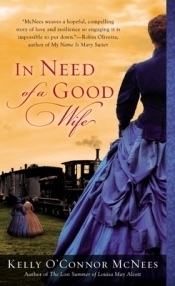 When I know an author has spent a year and more writing a new book, I feel a little guilty zipping through it too quickly. Kelly O'Connor McNees' In Need of a Good Wife is so wonderfully readable, though, that I couldn't help it; I found myself continually drawn back into the characters' world.
When I know an author has spent a year and more writing a new book, I feel a little guilty zipping through it too quickly. Kelly O'Connor McNees' In Need of a Good Wife is so wonderfully readable, though, that I couldn't help it; I found myself continually drawn back into the characters' world. By the fall of 1866, Clara Bixby, a Manhattan tavern keeper's daughter, has fallen on difficult times: her father is dead, her husband abandoned her after a miscarriage, and she desperately needs money and a fresh start. When she reads a newspaper article about the bachelor overpopulation in faraway Destination, Nebraska, she seizes the opportunity to set up the town's men with New York brides and bring the civilizing influence of good Christian women to the lawless West.
Rowena Moore, a once-prosperous Civil War widow, dreams of settling down with a wealthy businessman and re-establishing herself in social circles; Elsa Traugott, a quiet, middle-aged German laundress, hardly dares acknowledge any dreams for herself at all. They and other single women sign on with Clara's plan, putting their future in her hands. As the plot follows them from New York City to their new homes on the frontier, little works out as planned for any of the three, or for the hopeful men of Destination, for that matter.
Mail-order brides have appeared in historical fiction before, yet this is the first time I've seen the matchmaking process imagined as a potentially lucrative business venture. This clever twist on a theme, along with the novel's depth of detail and the intertwining of its three brave heroines' stories, make it stand out. Kelly O'Connor McNees was kind enough to answer some questions as part of her blog tour. I hope you'll enjoy this Q&A!
You've described yourself as a city girl. What aspects of life on the isolated Nebraska prairie of the mid-19th century did you find especially intriguing or appealing?
I think I am interested in the hidden domestic lives of the women of the past because for a long time those experiences were missing from the narrative of history, and because I think the key to understanding what life was like for them lies in understanding the way they spent their time.
Keeping a family clothed, fed, and healthy was a task so arduous it boggles the modern mind. This was true in cities as well as rural outposts, but homesteading women had it particularly tough. These couples had to be almost completely self-sufficient. If you didn’t have something, you either made it yourself or went without. But there was enormous pride for them in being able to break the land and make it yield something, in building a house and a family.
I read one account of a woman homesteader that described how she gave birth, unassisted because there was no doctor nearby, to her sixth child on the kitchen table. That was in the morning. By the evening she was up cooking a meal for the men in the field. I admire and also am sort of haunted by that kind of resolve. Because you know there was pain and loneliness and suffering there, even if they wouldn’t acknowledge it.
Clara, Rowena, and Elsa are very different from one another, and sometimes their personalities and motives cause conflict (particularly Clara and Rowena). Did you identify with any of them more than the others, or find yourself taking one woman's side more frequently?
Some people have told me that they find Rowena unlikable. I find that interesting. Obviously, she is self-interested, a thief, and a liar, so that’s not a ringing endorsement. But there’s something about her I like a lot. She will not be defeated. She will do whatever she has to do to survive in the way she feels she must. But she will pay a price for that too.
Clara, I felt, had to take on this project of matchmaking because she had to make her life about something besides the grief she feels after losing her child. She too is trying to survive somehow.
Elsa is quieter than the other two, more at peace with herself and her place in the world. She has made a little country inside herself, and she doesn’t need to leave it. There is strength in that, but strength too in venturing out anyway. I know she doesn’t actually exist, but sometimes I really wish I could have a cup of coffee with her.
With this novel, you’ve switched from writing about a well-known historical character to having three fictional women as protagonists. Did you find it any more liberating, knowing you were able to create their characters yourself?
Oh, yes! It was wonderful to have the freedom to structure the plot any way I wanted, and to put these characters through a series of experiences I could invent. On the other hand, I started from an absolute blank, so it was a lot of work!
I loved reading the section of letters between bachelors and their potential brides. Were they as much fun to write as they were to read?
Yes. That was one of my favorite sections to work on. I briefly considered writing the whole novel in that style, but of course epistolary novels have all kinds of pitfalls and I would have missed the opportunity for setting and description and real-time dialogue. I found inspiration for the tone and the content from letters in the Library of Congress archive. And just from imagining what kinds of things these potential mates might want to know about each other.
What were some of the more fascinating or surprising facts that you picked up in the course of your research?
I was surprised to learn that in the early years of the Homestead Act, single women could take on as much land as a man could. That seemed very progressive to me—what an opportunity for a woman in that time. And I was fascinated anew (since I learn it over and over again as I read about the past) by just how resourceful and determined some women could be, how they never accepted the limitations of their time but went headlong into the thing they wanted—whether it was freedom or money or fame or regard—and claimed it.
In Need of a Good Wife tackles some serious issues – not just the difficulties of prairie life and the complications of marriage, but also things like the Civil War’s aftermath, urban poverty, and even insane asylums. Despite this, the novel isn’t depressing, there are many wonderful touches of light humor, and its tone is ultimately hopeful. Did you find this a challenging balance to achieve as you were writing?
I don’t think I set out to include humor in the story, but it just sort of found its way in. I think a wry view of the world—an ability to laugh at inevitable suffering—is probably the most useful coping skill a person can hone. The real letters I found in my research, as well as the personal ads in the matrimonial newspapers, were often written with humor. These people knew finding love through an ad was a long shot, and possibly even a ridiculous endeavor. I found plenty of stories about the ways in which it went wrong. But they seemed to throw up their hands and say, “What the heck?” I admired this attitude: realistic but never cynical. This is the attitude that built the frontier.
Thanks very much, Kelly!
~
In Need of a Good Wife is published this month by Berkley in trade paperback ($15.00 / $16.00 in Canada, 387pp, including a detailed author's note and reader's guide). Visit the author's website at kellyoconnormcnees.com.
To follow along on the blog tour for In Need of a Good Wife, check out these sites as well:
Oct. 2: http://stylesubstancesoul.com/category/interviews/
Oct. 3: http://www.greatthoughts.com/
Oct. 4: http://nomadreader.blogspot.com/
Oct. 5: http://www.erikarobuck.com/Blog.html
Oct. 8: http://www.2readornot2read.com/
Oct. 9: http://themaidenscourt.blogspot.com/
Oct. 10: http://literatehousewife.com/
Oct. 11: http://www.luxuryreading.com/
Oct. 12: http://readingthepast.blogspot.com/
Oct. 25: http://womensfictionwriters.wordpress.com/
Oct. 29: http://www.wondersandmarvels.com/
Published on October 12, 2012 05:00
October 9, 2012
An interview with Mary Sharratt, author of Illuminations: A Novel of Hildegard von Bingen
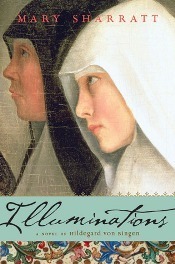 There has been a lot of buzz surrounding Mary Sharratt's new novel, and for good reason. Illuminations: A Novel of Hildegard von Bingen is biographical fiction at its most lyrical and profound. With a vivid sense of place and deep insight into the mindset of its time, it reveals the truly inspiring story of a woman whose strength of character helped her endure thirty years in an anchorage—a small cell within the monastery at Disibodenberg in Germany—before emerging as a vital force who not only transformed the Church to which she dedicated her life but also an entire era. I loved it.
There has been a lot of buzz surrounding Mary Sharratt's new novel, and for good reason. Illuminations: A Novel of Hildegard von Bingen is biographical fiction at its most lyrical and profound. With a vivid sense of place and deep insight into the mindset of its time, it reveals the truly inspiring story of a woman whose strength of character helped her endure thirty years in an anchorage—a small cell within the monastery at Disibodenberg in Germany—before emerging as a vital force who not only transformed the Church to which she dedicated her life but also an entire era. I loved it.Illuminations is published today by Houghton Mifflin Harcourt ($25.00, hb, 288pp). I hope you'll enjoy this interview with Mary, and please read to the end... we have a giveaway opportunity which is open to all blog readers.
~
To imagine the life of a 12th-century abbess, mystic, and saint for a 21st-century audience would seem like a daunting task for any novelist, but I thought you did a magnificent job relating Hildegard von Bingen's spiritual beliefs and visions as well as her more human feelings. Did you know from the beginning that you would write her story in the first person? How did you capture her voice?
Illuminations was truly my most daunting novel to write, because I was so in awe of Hildegard and so afraid of getting it wrong. I also felt quite intimidated to be writing about such a religious figure since I fall more comfortably under the "spiritual but not religious" umbrella. For a long time I struggled to find the right narrative voice and actually wrote two narratives--one first person and one third person--in parallel until finally the first person won out. My editor felt it was more intimate and compelling. By then I realized that in order to do justice to Hildegard's incredible story, I would have to let her breathe and reveal herself as human.
Why did you feel this was this the right time in your career for you to write Illuminations?
With four previous novels under my belt, I guess I finally felt I had achieved the right degree of literary maturity to tackle someone as complex as Hildegard. Also the twelve years I lived in Germany and my studies in herbal medicine all went into the novel. I'm glad I didn't attempt this project as a first novel! Unbeknownst to me when I started writing in 2009, the timing was perfect as the novel's publication coincided with Hildegard's elevation to Doctor of the Church--something I could not have predicted.
When we spoke about your previous novel Daughters of the Witching Hill in 2010, you mentioned how much it had meant to "inhabit the same landscape as your characters." How familiar were you with Hildegard's life before you moved to Germany, and how did your time there affect your impressions of her?
I didn't know a whole lot about Hildegard when I first went to Germany back in 1986--I am revealing my old age! But in Germany she had always been a cultural icon, admired by both religious and spiritual people and also by completely nonreligious people. They admired her for her music, for the complexity of her writings in all kinds of different subjects ranging from botany to cosmology to human sexuality. She also developed her own style of holistic medicine that's still practiced in Germany today. The secondary sources written about her in the German language are far more varied and reader friendly without sacrificing depth or accuracy than many of the English language books which can either be oversimplified, or dry as dust, or so complex that you almost need a PhD in theology to understand them.
In your novel, Hildegard has such a complex relationship with Jutta von Sponheim - who is the cause of her enclosure in the anchorage at Disibodenberg, but also her mentor and teacher while growing up. Hildegard also becomes Jutta's caretaker during her more melancholic and ascetic episodes. How did you come to portray the dynamic between them?
Jutta's own Vita, or saintly biography, written shortly after her early death, bears witness to Jutta's extreme asceticism which was at odds with the Benedictine ideal of moderation. Her fasts were so prolonged, for example, that her abbot actually broke down in tears and begged her to eat. The part in the novel where Hildegard finds the spiked penitent's chain wrapped three times around Jutta's wasted corpse is based on Jutta's Vita, as well. Jutta considered herself a living sacrifice and her suffering was meant to be redemptive and an imitation of Christ's passion, but even in the context of her time, her mortification of the flesh was considered very extreme.
It's plain to see that in Hildegard's own writing, she completely rejects this kind of masochism and endorses healthy moderation.
Seeing that Hildegard took a completely different path from Jutta seems to indicate some strain in their relationship. Although Hildegard was very forthcoming describing her life long friendship with Volmar, the monk who would become both her secretary and her confessor, and her beloved protegee, the young nun Richardis von Stade, she is curiously reticent describing her feelings for Jutta, the woman who was her mentor and spiritual mother. Hildegard only came into her powers and started writing and composing after Jutta's premature death. I believe Hildegard had to step free of Jutta's shadow before she could truly begin her life's work.
Given that Hildegard lived such a long life, especially for a medieval woman, how did you decide what to include versus leave out when structuring the novel?
This was so difficult for me and the novel went through many drafts. The original version I submitted to my editor was twice as long as the version that is now published and included a whole subplot about Hildegard's relationship with a Cathar woman whom she exorcised (true story) and the backstory of the apostate monk buried in Hildegard's graveyard. It had so many subplots that it needed quite a bit of pruning.
Although she doesn't have much time on the page, I loved the character of Trutwib, the female hermit whose prediction changes everything for Hildegard. Is she based on a real person?
Yes, she is. Trutwib was a widow who lived as a hermit and she delivered her prophecy just as Jutta and Hildegard first went into the anchorage. To make for more dramatic plotting, I had her announce her prophecy later in the story, when Hildegard was a teenager, no longer a child.
Music plays a large role in Hildegard's spiritual life. Which compositions of hers do you enjoy most, or influenced you the most?
I love all her music and listened obsessively to it while writing Illuminations. I think my favorite piece is "Caritas Habundat in Omnia," (Divine Love Abounds in All Things), which is one of the most achingly beautiful sacred songs ever written. It also evokes Hildegard's vision of the Feminine Divine in the form of Caritas, Divine Love, whom she envisioned as a beautiful maiden with flowing black hair.
You've written three historical novels about fictional characters, then moved to depicting the inner lives of real-life women whose stories deserve to be rediscovered. I was also excited to read that your next subject will be 16th-century literary figure Aemilia Lanyer. Are there factors to which you attribute this shift in focus for your writing?
Over the years I discovered that real life history is often quirkier, more bizarre and fascinating than anything I could possibly invent. I love to uncover real stories of historical women and drag them out of the margins and set them center stage. One of my goals as an author is to write women back into history. In Illuminations, I wanted to write a novel that was accessible to a wide secular audience and that could still portray Hildegard in all her complexity. That's the great magic of historical fiction.
Thank you so much, Mary!
~
For a chance to win a new hardcover copy of Illuminations for yourself, simply fill out the following form. International entrants welcome! Thanks to Houghton Mifflin Harcourt for providing me with a copy for this giveaway. Deadline Friday, October 19th.
Published on October 09, 2012 10:46



